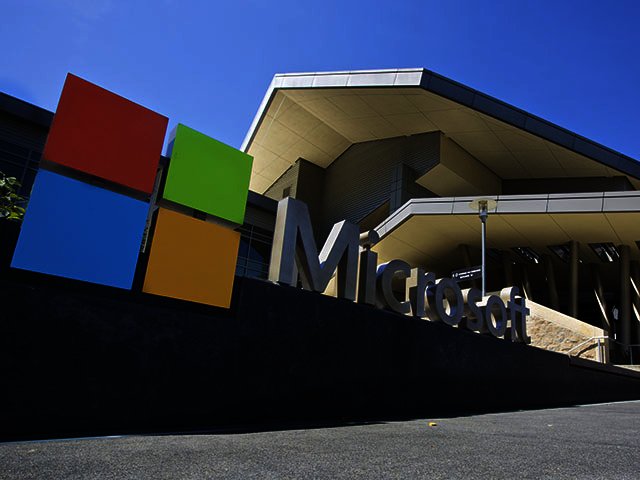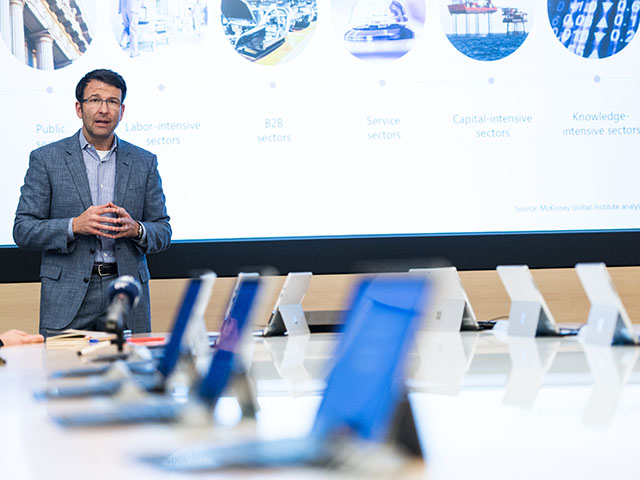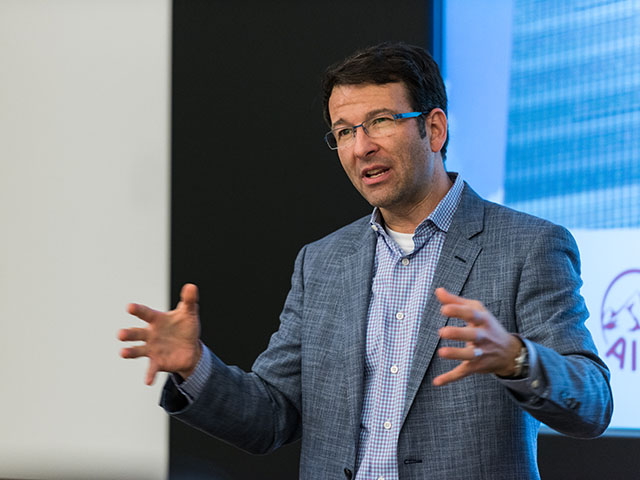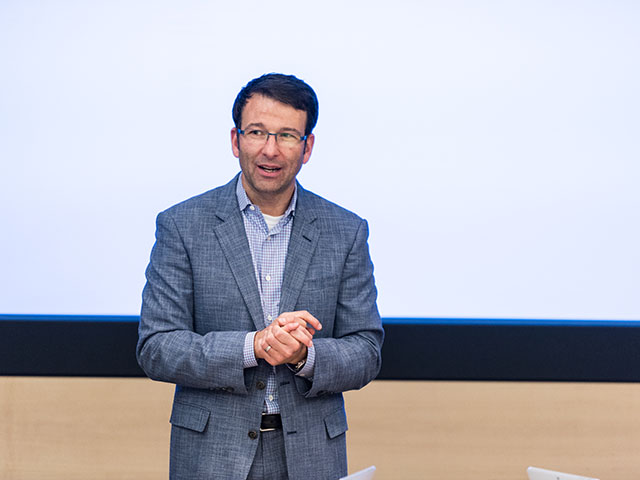Microsoft Underground Tour: A Time for Transformation
By Ryan Noik 25 November 2016 | Categories: news
The penultimate in-depth topic before the conclusion of our report back from Microsoft’s Underground tour. Held at Microsoft HQ in Redmond, Washington, the next topic was also one of the most alluring – digital transformation. Ryan Noik explores.
Much has been said by a myriad of companies about how the world is changing and what has been dubbed the fourth industrial revolution. To provide a grasp of just how monumental this shift is Judson Althoff, executive vice president, worldwide commercial business at Microsoft, began by pointing out that the three preceding industrial revolutions altered the world, forever and unrecognisably.

Judson Althoff, executive vice president, worldwide commercial business, Microsoft.
Full steam ahead
It was steam that ushered in the first industrial revolution. Suddenly, there was a man made, replicable way for people and companies to enjoy faster-than-horse transportation. This affected how goods could be moved around a country, venturing into new markets and taking advantage of different ways to reach customers.
Also changing the landscape was the second industrial revolution, brought about by the advent of electricity. This, he continued, altered the workday and the production that factories could achieve, with companies at that time actually having an electricity strategy and a Vice President of Electricity (their version of today’s CIO).
The third (and most recent) industrial revolution was characterised by information, and was brought to bear by the internet. Similarly, businesses found entire new markets opening up, with ways to connect and communicate beyond their borders, to enjoy quite literally, a world of customers.
A typical example of this is online shopping. What was once only conceived by mail order companies has now becoming commonplace, as buying online from anywhere in the world is often the first choice for purchasing everything from tech to clothing.

May the Fourth be with you
This brought us to the fourth industrial revolution, characterised by digital transformation. It is a bit more nebulous than the preceding revolutions though, as Althoff noted that it means a number of different things to a variety of industries. Additionally, it is also the revolution that we are currently in the midst of, and thus its scope and impact is still being realised.
However, much like steam or electricity in its time, digital transformation is being considered to be of paramount importance, whether it is finding its impact on health care, automotive, policing or agriculture, to name a few industries that are now making it front and centre of their strategies.
From Microsoft’s point of view, Althoff elaborated that the company believes there are four components to digital transformation, namely engaging customers, empowering employees, optimising operations and finally, transforming products.
Discussing the first component, engaging customers, Althoff elaborated that digital transformation demands more than simply selling a product to companies. Rather, it is entails understanding the customer’s needs and working them. One example given of how engaging customers on their digital transformation journey can have a more far reaching impact is the work Microsoft is doing with water management company, Ecolab. The latter has leveraged Microsoft’s cloud to enable it to empower its customers in the agricultural, food and beverage and manufacturing industries, to use water considerably more efficiently. Considering the drought that many regions are grappling with, this has an immediate and significant impact.
Not your grandfather’s farm
Another example of how technology and the digital transformation can have real world impact is Land O’Lakes, which offers seed planting solutions for farmers. By using information gleaned from satellite imagery of their farm, they are able to plant seeds more efficiently so as to ensure maximum yield. This not only benefits the farmers, it also has a broader impact on combating food shortages brought about by climate change.
The next pillar of digital transformation is empowering employees, providing them with the digital tools to be more productive. This, Althoff stressed, requires an end to end cohesive investment, such as the inroads made by Macy’s. The department store equipped its customer sales representatives with Surface devices. These are loaded with interactive employee tools so that sales representatives can engage in real time with people making purchasing decisions, while being connected to data analytics and intelligence on the backend. The result? A 40% increase in sales.

I can make you better, faster, stronger
The third component, that of optimising operations, is certainly not an unfamiliar goal, with IT being tasked for quite some time with ensuring more efficient operations. However, Althoff explained, the digital transformation enables businesses to think a bit differently than it has before, and extend beyond simply having more processing power available to it.
A prime example of this in action, he continued, is chocolate and candy maker Hersheys. By placing intelligent sensors on its machinery, it is able to determine whether its formula for making Twizzlers is correct, thus saving on wastage. The financial impact of deploying intelligent technology is a whopping $500 000 saving per batch of its candy, easily becoming tens if not hundreds of millions of dollars worth of production cost.
Last, but not least, digital transformation also consist of transformative products, in which a product users buy evolve on their own. Althoff pointed out that the best example of this is Tesla, with its cars downloading new software and features over time, becoming better on its own without requiring users trade it in for a new model. It could also be argued that our smartphones have been similarly transforming, automatically upgrading to the latest version of their OS and becoming more fully featured the longer they are owned.

To be, or not to be
While these were just a few of the examples offered of the kinds of ways digital transformation is impacting on industries, a couple of lingering questions remained: Is digital transformation being embraced, or resisted? How much does Microsoft have to push the idea of the fourth industrial revolution to customers before it is accepted as happening? After all, some industries are notorious for being entrenched in their traditional ways of doing things (e.g.. the financial services sector).
“It depends on who you talk to. I find that when speaking to a CEO, we are able to capture their attention pretty quickly with it only taking a few scenarios for them to realise that if they don't embrace digital transformation, they will be out of business. They then tend to get really excited, really fast,” Althoff explained.
However, not everyone is so quickly enamoured, with technical IT staff tending to be more intimidated by the ramifications of what digital transformation means. “The technical underpinnings are pretty significant, with considerations including IoT capabilities v.s. data sources, algorithms, machine learning and connected business processes. This means that there is a lot to learn,” he continued. Althoff’s advice was to bring both parties together, with the best implementations coming from inspiring CEO’s and empowering IT professionals.
And with that, our penultimate session was at an end, making way for the last demo from Microsoft’s Underground tour, and a new frontier to explore.
Need to catch up? Navigate to the links below to read all the previous articles in the coverage so far.
Technology for the good of all Part 1
Technology for the good of all Part 2
Most Read Articles

Have Your Say
What new tech or developments are you most anticipating this year?



